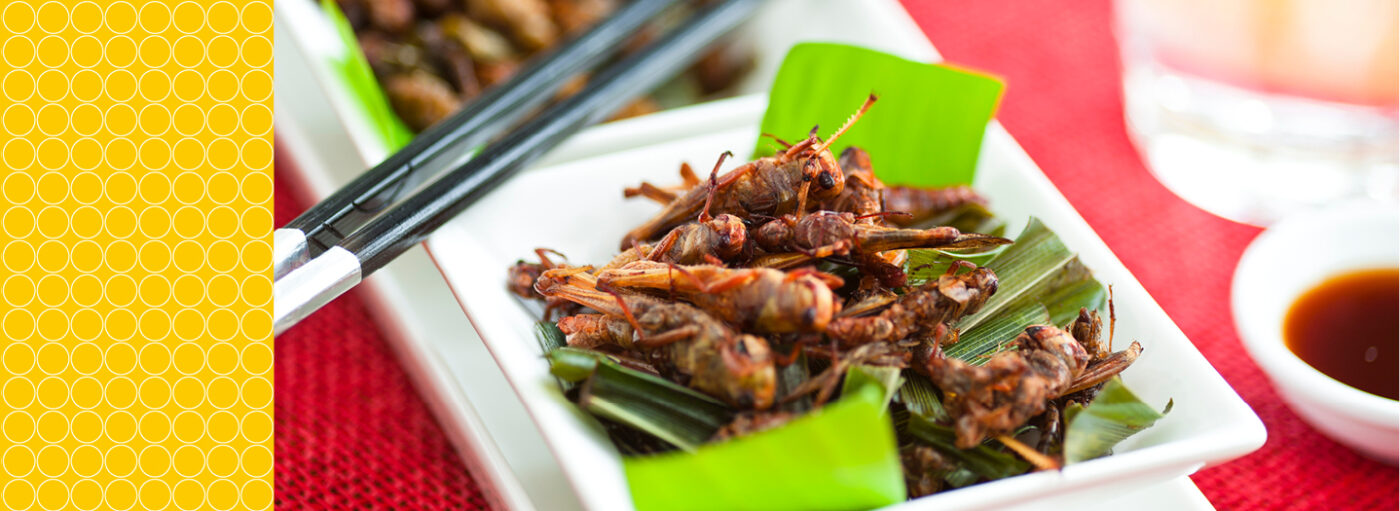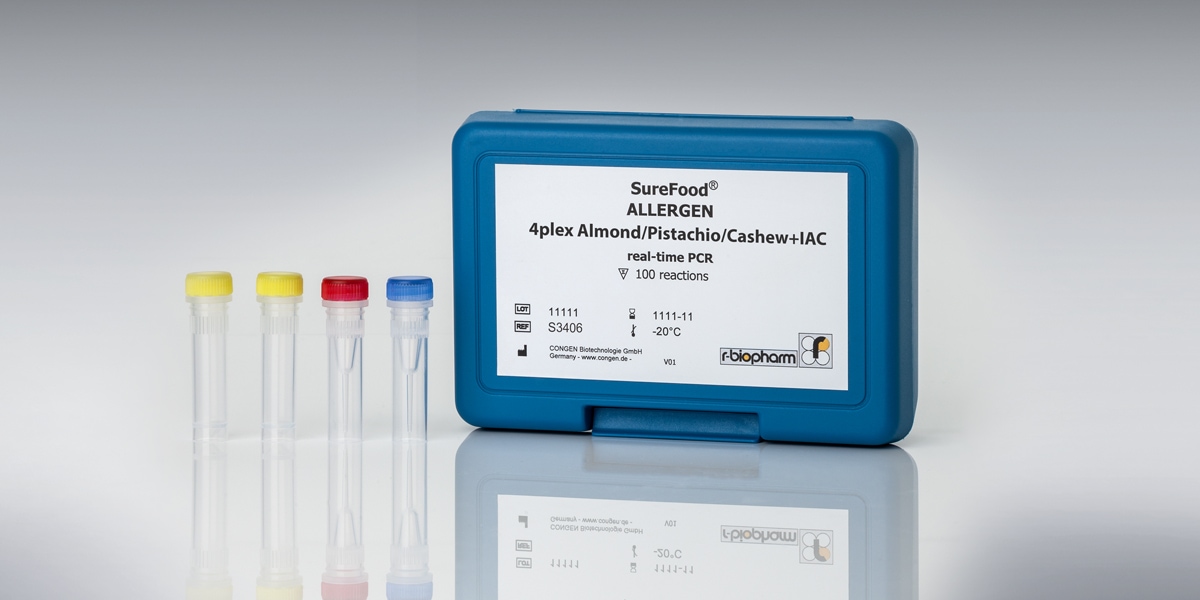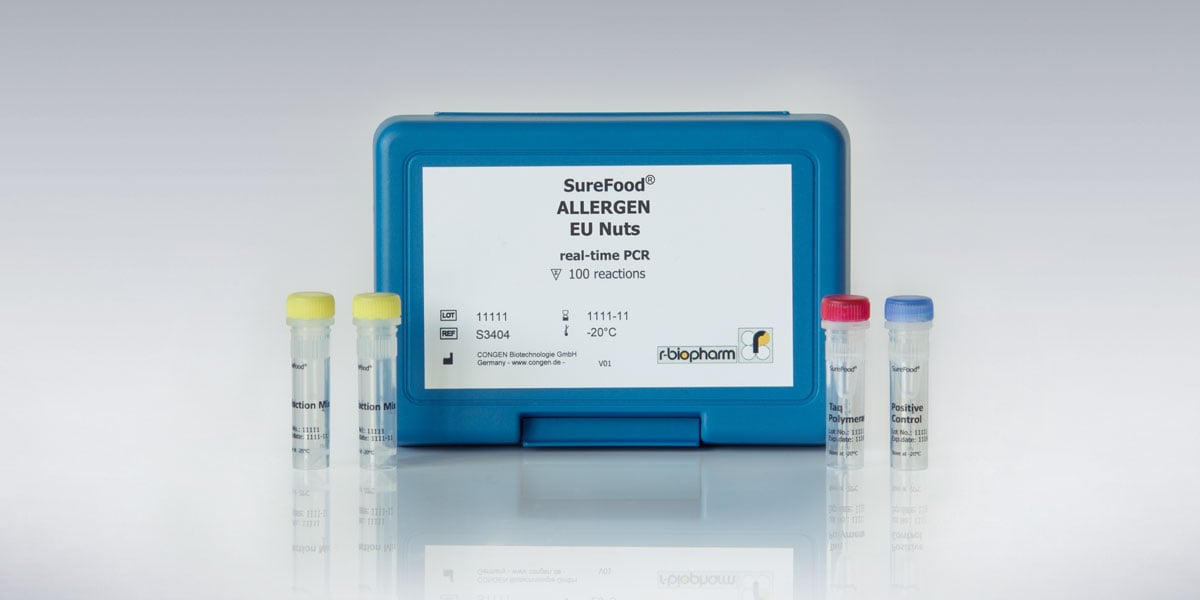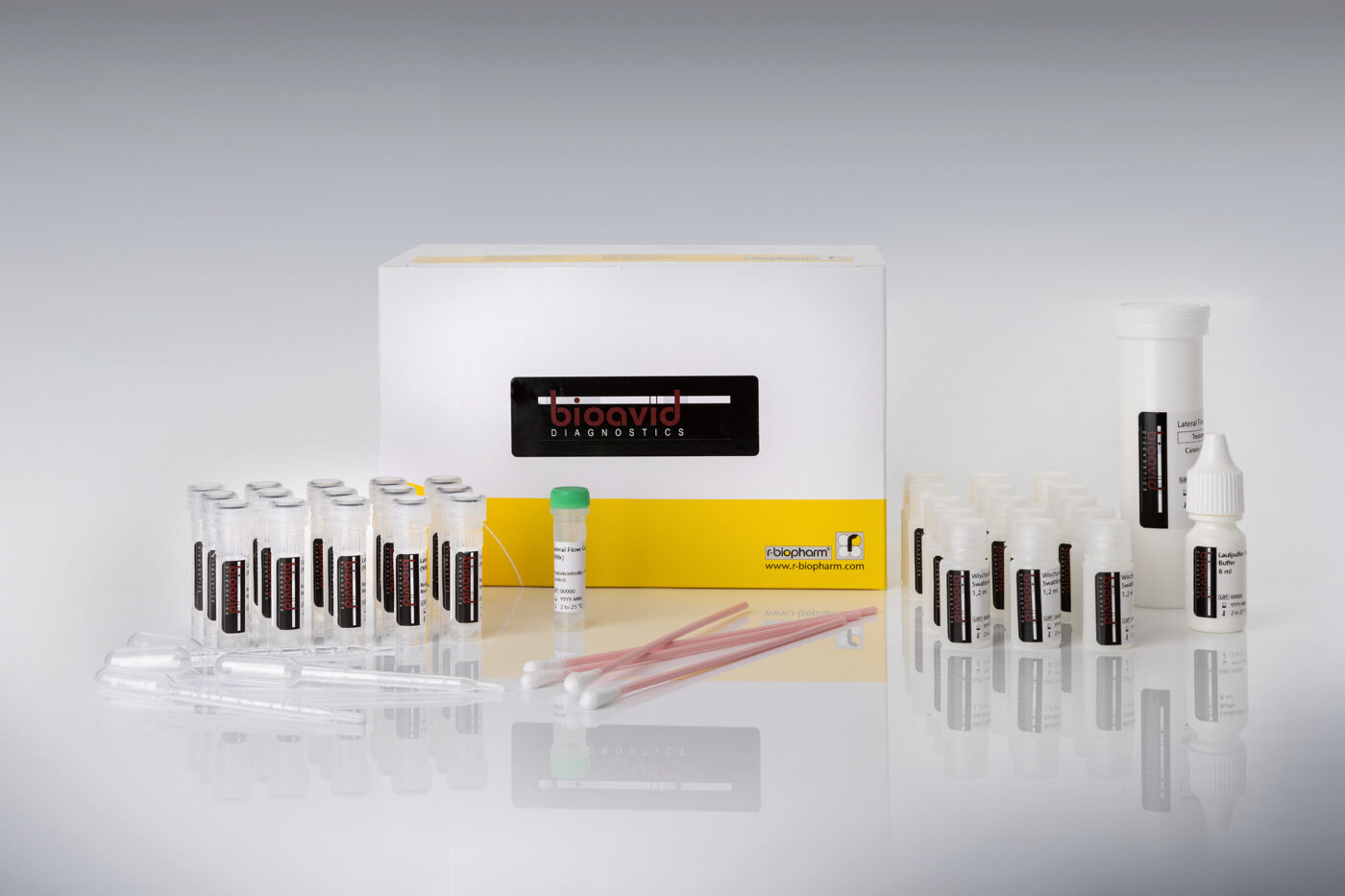
News
Recent news in Food & Feed Analysis
- Home
- /
- Edible Insects – delicacy...
Analytes
Edible Insects – delicacy or allergy risk?

Edible insects are a matter of course for more than a quarter of the world’s population, because they taste good, are nutritious and are relatively readily available. Thus, insects supplement the diets of approximately two billion people in various countries around the world – mainly in parts of Asia, Africa and Latin America. More and more, the interest in insects as a sustainable source of nutrition is increasing in Western countries as well. Furthermore, the processing of insects for food and feed is comparatively easy. In some cases, the whole insect can be or is consumed. However, they can also be processed into pastes, ground to meal, and their proteins can be extracted.
According to the FAO, the use of insects as food and feed has not only health benefits, but also environmental, livelihood and social benefits.
Health benefits
- The nutritional content is dependent on the insects’ stage of life (metamorphic stage), habitat and diet.
- Nevertheless, it is commonly accepted, that insects provide high-quality protein and nutrients comparable with fish and meat.
- They are high in fatty acids, rich in fibre and micronutrients such as copper, iron, magnesium, manganese, phosphorous, selenium and zinc.
Environmental benefits
- Their ecological footprint seems to be is also promising. For instance, pigs produce ten to 100 times more greenhouse gases per kilogram of body mass than the same amount of mealworms.
- The feed-to meat conversion rate of insects are very efficient. On average, insects can convert 2 kg of feed into 1 kg of insect mass, while cattle require 8 kg of feed to produce 1 kg of body weight gain.
- Insects use significantly less water than conventional livestock.
- Insects can feed on bio-waste and can transform this into high-quality protein that can be used for animal feed.
- Moreover, insect farming is less land-dependent.
Livelihood and social benefits
- Collection of insects can be directly collected in the wild. Little technical or capital expenditure is needed for basic harvesting and rearing equipment.
- Gathering in the wild as well as cultivation, processing and selling can be done can directly improve diets and provide cash income through the selling as street food for instance.
- In addition, insect harvesting and farming offer entrepreneurship opportunities.
Edible insect are defined as novel food
Edible insects fall into the Novel Food category. Novel Food is defined as food that had not been consumed to a significant degree by humans in the EU before 15th May 1997. The current Novel Food Regulation, valid since 1st January 2018, explicitly considers whole insects as Novel Foods, which must thus get an approval. The Novel Food Regulation is only about the approval of a product, following a strict scientific valuation made by the European Food Safety Authority (EFSA). The EFSA validates, that the food does not pose a safety risk to human health. This includes allergenic risks for instance.
Following the approval of yellow mealworm (Tenebrio molitor), the European Commission has approved the migratory locust (Locusta migratoria) as well as the house cricket (Acheta domesticus).
Other insect species present in the summary of applications to the European Commission are for example:
- Lesser mealworm (Alphitobius diaperinus) as whole and ground larvae products
- Banded crickets (Gryllodes sigillatus) in dried form
Everything else that is offered at the moment is allowed to be marketed due to a transitional regulation (DVO (EU) 2017/2469, Art. 8 Para. 5) until a final decision has been reached.
Labeling and product specificity
So far, the Regulation (EU) No. 1169/2011 is in force for the general declaration of edible insects. General mandatory limit values for product and process safety are not defined yet.
The EU Commission can set specific requirements in regards with the novel food approval of individual insects. The Regulation (EU) No. 2021/882 for instance, contains both specifications for the labeling of corresponding foods as well as product specifications for dried mealworms (Tenebrio molitor). It defines product features such as the typical fat content of the mealworm, limit values for specific heavy metals, mycotoxins and microbiological criteria.
How are the edible insects served?
The Novel Food comprises frozen and freeze‐dried formulations of the yellow mealworm, whole or in the form of powder. The migratory locust can be used as frozen, dried or powder form. In the frozen and dried forms, legs and wings have to be removed by the food business operator to reduce the risk of intestinal constipation.
Both, the yellow mealworm and the migratory locust, are intended to be sold as a snack or as a food ingredient, in a number of food products:
- Flour: pulverized, freeze-dried insects (e.g. cricket flour)
- Burger: patties made from insect powder/ insect flour (mainly from mealworms or house cricket)
- Protein bars containing insect powder (commonly house crickets)
- Pasta: pasta made of wheat flour, fortified with insect flour (house crickets or mealworms)
- Bread: bread baked with insect flour (mostly house crickets)
- Snacks: crisps, flips or small snacks (bites) made with insect powder and other ingredients
Allergenic potential
Food allergy to insects has been reported for a variety of insect species such as silkworm, mealworm, caterpillars, locust, grasshopper, cicada, and bee.
As both, insects and crustaceans (e.g. prawn, shrimp) are in the arthropod family (having an exoskeleton and segmented bodies), and crustacean allergies are both relatively common and potentially severe, cross-reactivity of insect proteins with crustacean proteins is perhaps the primary food allergy concern.
The proteins tropomyosin and arginine kinase have been identified as the main allergens within insects that can invoke an allergic response when consumed by sensitized individuals. These two proteins are recognized for triggering shellfish (e.g. crustaceans and molluscs) and house dust mite allergies.
Furthermore, it was observed that thermal processing and digestion techniques do not eliminate insect protein allergenicity.
Finally yet importantly, the relatively high prices could lead to dilution of this ingredient with for example soya or wheat among others, which then again increase the risk of allergenic reactions.
Other possible risks
Microbial contamination: insects are generally considered to be carriers of pathogens. Therefore the risk of food pathogen contamination (e.g. with Salmonella spp. or Shiga toxin-producing Escherichia coli) should be taken into consideration especially in the ‘raw’ state of the edible insect. See the table as example for specific microbial specification in regards of the Tenebrio molitor larva (yellow mealworm).
Use of drugs such as antibiotics, hormones or other chemicals: The breeders in Europe point out that the insects have so far been bred without the use of antibiotics, hormones or other chemicals, but so far, there are no neutral control results.
To date, there are no special hygiene requirements for food insects. For example, there are no clear requirements for approval and identification for insect producing and processing companies.
What are edible insects fed with?
Until now, there are no specific regulations for edible insects regarding the requirements for their feed. The feed hygiene regulation therefore applies. This defines criteria for feed that is produced for feeding animals intended for food production. Food waste for example is prohibited. Only additives approved for feed may be used and certain microbiological requirements must be complied with.
‘Ick’ factor or delicacy?
Yet, there is still a great ‘ick’ factor many consumers have when faced with insect-based foods.
However, other countries other customs – so here some examples of valued delicacies:
- Roasted grasshopper, raw or cooked termites are appreciated in Nigeria.
- Chocolate covered grasshoppers are treasured sweets for kids in Guatemala and South Mexico.
- In garlic and oil cooked ant larva in Tortillas can be found in Mexico.
- Hachinoko are bee and wasp larvae, a real delicacy in central Japan. The larvae are harvested from the nests and then fried in a classic combination of soy sauce and sugar.
- Grilled caterpillar larvae are a popular delicacy, especially in Taiwan. They are also extremely nutritious: just 100 grams cover an adult’s daily need for vitamins and minerals.
What about foods that ‘secretly’ may contain insects?
The U.S. Food and Drug Administration (FDA) published the Food Defect Levels Handbook with detailed acceptable levels of food contamination from sources such as maggots, thrips, insect fragments, “foreign matter”, mold, rodent hairs, and insect and mammalian feces per food basis. Both the defect source (pre-harvest infection, processing infestation, processing contamination, etc.) as well as the significance (aesthetic, potential health hazard, mouth/tooth injury, etc.) are listed. For instance, foods like canned fruit, cornmeal, and chocolate are allowed whole insects, insect parts and insect larvae.
Pasta – the FDA legally allows up to 225 insect fragments per 225 grams of pasta.
Chocolate – per 125 g chocolate up to 74 insect fragments are allowed.
Berries – the FDA allows up to four larvae or ten whole insects per 500 grams.
Cinnamon – the FDA allows up to 400 insect fragments per 50 grams.
Ground pepper – up to 475 bug parts can end up in 50 grams.
Entomophagy: Consumption of insects by humans
This infographic summarizes all the interesting facts about insects:
- Why should we eat insects?
- What about health issues?
- What insects species are commonly consumed?
- What are the ways insects are consumed?
- Which insects are listed as novel food in the EU?
- Classification of the insect species
References:
- De Gier, S./ Verhoeckx, K., Insect (food) allergy and allergens, in: Molecular Immunology, August 2018, pages 82-106.
- De Marchi, L./ Wangorsch, A./ Zoccatelli, G., Allergens from Edible Insects: Cross-reactivity and Effects of Processing, in: Current Allergy and Asthma Reports 21, 30th May 2021.
- Elliot, C., Emerging risks from emerging proteins, in: New Food Magazine, 3rd December 2021.
- Verbraucherzentrale, Insekten essen: Eine Alternative zu herkömmlichem Fleisch?, 19th January 2022.



